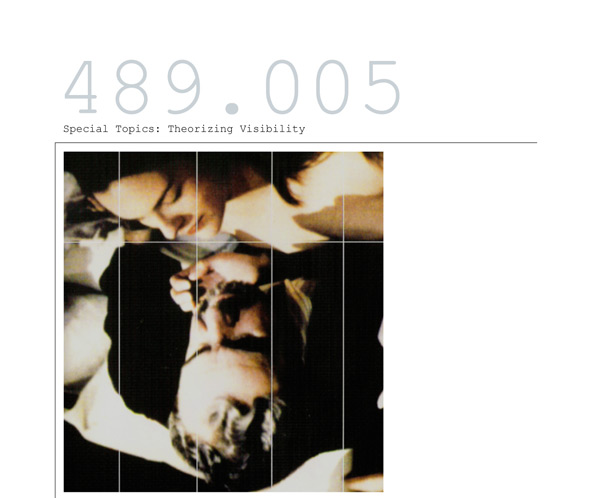
In a recent essay, the art historian Norman Bryson (citing art critic Camiel van Winkel) characterized contemporary visuality in terms of a “permanent pressure to visualize, to expand and enhance sites and occasions for visualization: a ‘regime of visibility’ that ‘permeates all levels of culture and society, from centre to margin, for high to low.’” In this seminar, we explore this, and other twentieth-century and contemporary theorizations of the visible. Organizing our thinking around four key themes — spectacle, simulation, surveillance and self-showing — we will work a range of visual (mainly filmic) materials including Luis Bunuel's film 'That obscure object of desire' (1977), Trinh T Minh-Ha’s ‘Reassemblage’ (1982), Moufida Tlatli's 'The Silences of the Palace' (1994), Victor Erice's 'The Quince Tree Sun' (1992) and Andrei Tarkovsky's ‘Andrei Rublev’ (1965). Key theoretical resources will include writing by Guy Debord, Michel Foucault, Laura Mulvey, Jacques Rancière, Peggy Phelan, Richard Dyer, Kaja Silverman, Maurice Merleau-Ponty and Jean-Luc Nancy. Teaching is by way of lectures, screenings, case-study work and discussion. Assessment takes the form of a mid-term test, an individual or group seminar presentation, and an end of semester research project/essay. A course reader will be available in electronic form via Mirlyn/C-tools. For reference purposes, you may also like to buy Martin Jay’s Downcast Eyes: The Denigration of Vision in Twentieth Century French Thought (University of California Press: 1994). Estimated cost of materials: less than $50. IV. 4
Instructor(s): Jorella Andrews
email: jorellaa@umich.edu
email: jorellaa@umich.edu
Thursday
4:00pm - 7:00pm
270 Tappan
3 Credit Seminar